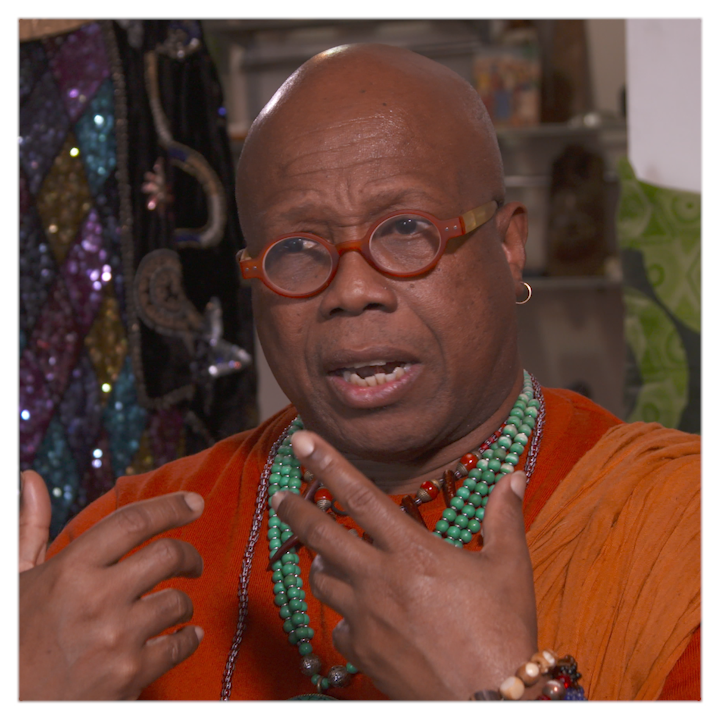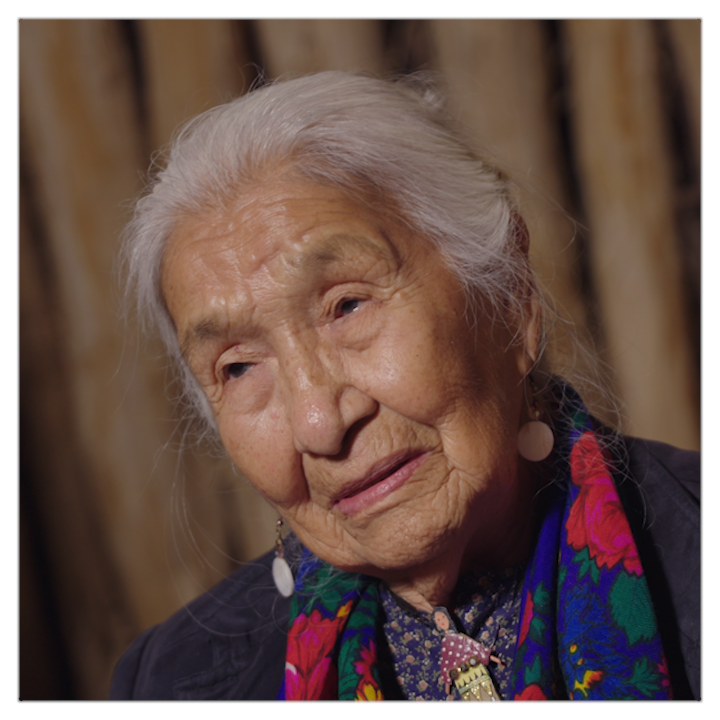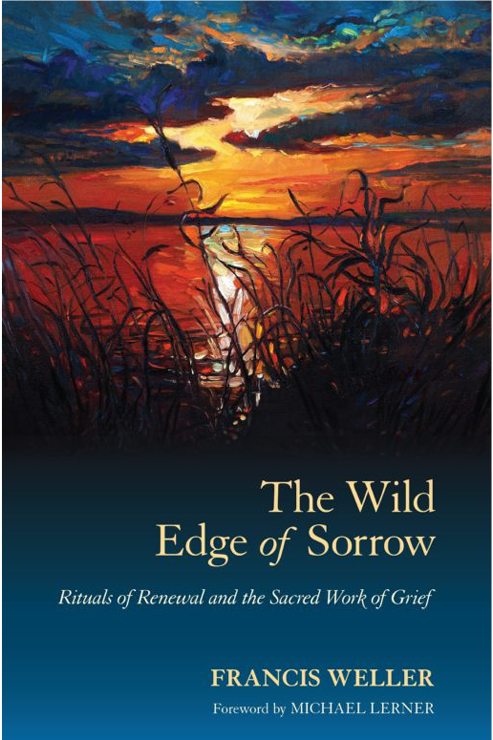Table of Contents

Developed by City Lore and the Nurse Practitioner Healthcare Foundation

Dying is the hardest work of all. The old and sick should be exempt from it. ~poet Anna Swir
1. Introduction
 All of us as have two experiences in common — birth and death. One is greeted with joy and celebration; the other is often accompanied by a wide range of emotions such as fear, relief, sorrow, joy, grief, and loss. In the process of dying, and in death itself, cultural practices and rituals play a key role in the individual’s and family’s experience of end-of-life. Understanding how death and dying have come to be expressed in culturally-specific traditions and diverse art forms offers remarkable insight into end-of-life situations, allowing healthcare professionals to develop essential cultural competencies and increased empathy.
All of us as have two experiences in common — birth and death. One is greeted with joy and celebration; the other is often accompanied by a wide range of emotions such as fear, relief, sorrow, joy, grief, and loss. In the process of dying, and in death itself, cultural practices and rituals play a key role in the individual’s and family’s experience of end-of-life. Understanding how death and dying have come to be expressed in culturally-specific traditions and diverse art forms offers remarkable insight into end-of-life situations, allowing healthcare professionals to develop essential cultural competencies and increased empathy.
This End-of-Life Toolkit is a set of resources that accompanies an eLearning course entitled “Heritage to Health: Harnessing the Power of the Arts for End-of-Life Care”. The Toolkit provides resources on death and dying, geared to both health professionals and the public. It contains links to textbooks, stories, poems, cultural perspectives on death and dying, as well as compelling video clips, examples of various art forms, and “how to” information for creating various types of memorials when an individual passes away. The Toolkit expands the opportunities for healthcare providers to enhance their skills in end-of-life care through the use of the Arts. It focuses on ways to create a culturally sensitive yet individualized environment for those at the end-of-life, using the Arts as a clinical tool for supporting patients’ beliefs, traditions, and customs in a meaningful way.
2. Harnessing the Power of the Arts for End-of-Life Care Continuing Education E-learning Course
This eLearning course is designed to build cultural competence in healthcare through the use of the Arts. The course, which takes about an hour and a half to complete, offers an opportunity for healthcare providers to expand their skills in end-of-life care through the use of the Arts. It focuses on ways to create a culturally sensitive yet individualized environment for those at the end-of-life and introduces the Arts as a clinical tool for supporting patients’ beliefs, traditions, and customs in a meaningful way. The course offers the learner 1.75 continuing education credits.
Click here to sign up to take the course: Harnessing the Power of the Arts in End-of-Life Care
The e-learning course features:

Keith Bear
Mandan/Hidatsa Storyteller Three Affiliated Tribes Reservation, ND

Regi Carpenter
Storyteller, Artist
Ithaca, NY

Rev. Cynthia Carter-Perrilliat, MPA
Faith & Health Advocate, Vocalist, Minister, Activist
Alameda, CA

Rosanna Esparza
Altar Maker
Los Angeles, CA

Ofelia Esparza
Altar Maker, National Heritage Award Winner Los Angeles, CA

Soren Glassing
Artist, Buddhist Chaplain
New York-Presbyterian Hospital
New York, NY

Annie Lanzillotto
Performance Artist/Storyteller
Yonkers, NY

Luana Morales
Ancestral Healing Arts Practitioner and Death Doula
Hyde Park, NY

Michael Manswell
Trinidadian carnival & J’ouvert artist, Yoruba Priest
Brooklyn, NY

William Rhodes
Memorial Quilter, Artist
San Francisco, CA

Tara Rynders,
RN-BC, MFA, BSN, BA
Dancer
Denver, CO

Malani Srinivasan
Teaching Artist
City Lore
Sunnyside, NY

Mary Louise Defender Wilson
National Heritage Award Winner
Dakotah/Hidatsa Storyteller
Standing Rock
Indian Reservation, ND
3. Harnessing the Power of the Arts Videos
The videos below tell compelling Stories and may expand your understanding of cultural aspects of death and dying. In the first, Trinidadian dancer, singer and poet Michael Manswell evokes the Yoruba God Oyá, customs officer for the dead. In our second video, Native American musician, Keith Bear, and storyteller, Mary Louise Defender Wilson, offer two Native perspectives on death and dying. In the third death doula Luana Morales, and dancer and hospice worker Tara Rynders, discussing the death of one of their parents, talk about the sacredness and beauty of being present during a “traveler’s” last moments.



4. Cultural Aspects of Death and Dying
a. ABCD Cultural Assessment Model
Developed by Dr. Marjorie Kagawa-Singer and Dr. Leslie Blackhall, this model is a cultural assessment mnemonic approach to assess the degree of cultural adherence to help avoid stereotyping and decrease the risk of miscommunication (Kagawa-Singer & Backhall, 2001.) learn more…
b. Approaches to Death in Diverse Cultures
Customs and rituals about death vary dramatically from culture to culture. Here we showcase 15 examples of different cultures, highlighting a few key points from each.
For more detailed information, go to ethnomed.org
c. Barriers to Communication – Video for Patients
This video from End-of-Life Choice New York, provides information and guidance for older adult immigrants and their families about how to navigate the medical system while honoring cultural values, beliefs, and traditions.
End-of-Life Choices New York is the leading nonprofit organization in New York working to improve end-of-life care and expand life options. Learn more here…

5. Expressive Art Forms
a. Troubled Times – Turning to the Arts
In this article, Dr. Peña reminds us that art can comfort us, art can help us understand and express our own emotions, and art can give us hope. Learn more…
b. Making a MEMORIAL Toolkit
This Memorial making toolkit is by folklorist Kay Turner for a project that City Lore is sponsoring called NAMING THE LOST Memorials. Made from simple resources, a grassroots memorial is a common gesture of mourning and remembrance that can carry deep meaning and resolve. Learn more
c. Creating Memorial Prayer Flags
“Creating Prayer Flags for a Memorial Celebration” is an essay written by Jennifer Mathews, M.A., that details what prayer flags are, what you need to create them, tips for the gathering or service, and ideas for the prayer flags after they are made. Learn more…
d. The Healing Tradition of the Harp
The harp has been revered as a healing instrument for thousands of years and by many cultures.
The characteristics that make the harp unique for healing include:
- The instrument’s archetypal significance as an ancient, spiritual healing instrument.
- Its wide pitch range which can vibrate the entire body.
- Its varied and soothing palette of tone colors.
- The ethereal effect created through the harp’s unique glissando technique.
- The tension-then-release associated with the emotional expression of plucking its strings, as Pythagoras suggested when he saw the strings as symbols of the nervous system.
(Excerpted from the Spring ’96 Harp Therapy Journal)

Harp for Healing
The harp’s power to soothe & heal
The goodness of Harp Therapy
E. Decorated Caskets
Many Americans have begun decorating caskets, or creating environmentally-friendly caskets that decompose. Here are some examples:
23 Funeral Casket Decoration Ideas and Inspiration – Titan Casket
Texas man makes custom caskets for Uvalde school shooting victims – Good Morning America

F. Remembering a Life Coloring Page
Remembering A Life coloring pages, are peaceful images which provide a safe space to reflect on a loved one who has died. This relaxing activity requires no artistic skill, little instruction, and few materials. download a pdf here…
6. Giving a Voice to Sorrow: Personal Responses to Death and Mourning
a. Introduction
This essay and the examples that follow are a sharing of stories adapted from Giving a Voice to Sorrow, edited by Ilana Harlow and Steve Zeitlin (New York: Viking Penguin 2001, used with permission). They present a variety of creative ways through which people have responded to the imminent loss of their own lives or to the loss of loved ones. They explore how contemporary men, women and children have used storytelling, ritual, and memorial art to cope with death and to celebrate life, documenting outward expressions of inner struggles.
sharing of stories adapted from Giving a Voice to Sorrow, edited by Ilana Harlow and Steve Zeitlin (New York: Viking Penguin 2001, used with permission). They present a variety of creative ways through which people have responded to the imminent loss of their own lives or to the loss of loved ones. They explore how contemporary men, women and children have used storytelling, ritual, and memorial art to cope with death and to celebrate life, documenting outward expressions of inner struggles.
b. Dying in Character: A Six-Year-Old Girl with Leukemia Designs Her Own Death
c. Making Art with the Dying: A Hospice Worker’s Perspective by Katherine Blossom
d. Creating a Home Altar
e. Still Born Funeral told by Susan Knightly
f. The Added Meaning of Coincidence After Death about Judith Obodov Hardin adapted from Marilyn Webb’s The Good Death
g. Daughters Craft a Coffin for their Father told by Peggy King-Jorde
h. Making a Memorial Quilt by Sheryl Mullane-Corvi and Kathleen Doyle

i. Private Rituals of Grief: The Beau Geste adapted from Erika Brady
7. Books

The Spirit Ambulance: Choreographing the End of Life in Thailand by Scott Stonington

8. Podcasts
A podcast about death, grief, and the art it creates.
E1D (Everyone Dies) (every1dies.org)
Created by a retired nurse practitioner working in hospice and palliative care for 43 years, this is a resource for public education about issues related to serious illness, dying, death, and bereavement.
9. Poems
Do Not Stand at my Grave and Weep, Poet Mary Elizabeth Frye
Epitaph, Poet Merrit Malloyhttps://www.poetry-chaikhana.com/Poets/M/MalloyMerrit/Epitaph/index.html
Symphony in P-Flat, from “My Song for Him Who Never Sang to Me”, Poet Merritt Malloy
Where I’m From, Poet George Ella Lyon
10. Additional Websites
11.Heritage to Health e-learning courses
From Heritage to Health: An Art–Centered Approach to Cultural Competence (H2H) is a multi-year project that highlights the ways in which storytelling and the arts can inform the diverse practices of medical professionals. It is aimed at bringing healthcare providers closer to patients, as well as using various art forms and stories as a bridge between western “medical practices” and personal beliefs, traditions and faiths. Harnessing the Power of the Arts for End-of-Life Care is our third e-learning course in this series. Here are are links to the first two courses.
Course #1: Concepts of Culturally Sensitive Care focuses on the underlying concepts of culturally sensitive care: cultural humility, knowledge of various cultures, narrative competency, and structural competency or system “savvy.” Concepts are presented in a compelling way, with videoclips, images, and stories that enliven and inspire the content. The course will take about 60 minutes to complete.
Heritage to Health: Concepts of Culturally Sensitive Care (ID #6142 /W20-68A)
Activity Link: https://www.mycme.com/heritage-to-health-concepts-of-culturally-sensitive-care/activity/6142/
Course #2: Welcoming Patients to Your Practice, highlights the key skills needed to reach out and engage patients in their care in a sensitive manner. Respect and rapport, eye contact, accepting faith-based beliefs, appropriate touch, active listening, and avoiding ethnocentric responses are all highlighted through the artists’ lenses and works. The course will take about 60 minutes to complete.
12. Special Thanks
Generous support of this End-of-Life Toolkit was provided by the National Endowment for the Arts and the Robert Wood Johnson Foundation. Special thanks to our collaborators at Reimagine for their support and suggestions for artists to include in our program.


The views expressed in this Toolkit do not necessarily reflect the views of the National Endowment for the Arts or the Robert Wood Johnson Foundation.




